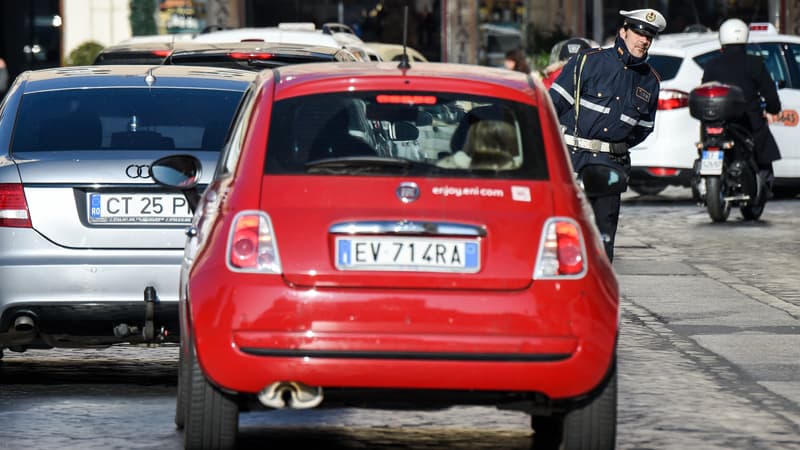Rome, regional capitals such as Milan or Naples, but also smaller municipalities. While Paris is discovering this system this Monday, nearly 300 Italian municipalities have already created a “Zone a Traffico Limitato” (ZTL), a limited traffic zone in Italian.
The country is even a pioneer in this area, since some were implemented more than twenty years ago, such as starting in 1999 in Turin, in northern Italy, or since the late 2010s in Milan. Although the modalities obviously depend on each municipality, the general framework of its application is usually similar.
What control methods?
The area is delimited by signs at the entrance detailing traffic conditions and crossing prohibitions and the vehicles affected. License plate reading radars ensure that vehicles entering the area are monitored at each entrance. The amount of fines is usually around 100 euros.
These vehicles are usually the same as in Paris: taxis, public transport buses, soft mobility, but also local residents and merchants. People who want to travel through the area – for example, tourists whose hotel is in the area – must register on a website to request possible access.
In retrospect, what consequences has the establishment of these zones had? According to a study by Céréma, which studied in particular the ZTL of Turin, Milan and Cuneo in Piedmont, the first notable consequence is a new distribution of the road. For example, in Turin and Cuneo, the implementation of the ZTL was accompanied by the pedestrianization of certain roads. The result is a decrease in the use of motor vehicles. “The results of these ZTL are a modal share of individual motor vehicles that has fallen from 78% to 48% in about ten years,” underlines Céréma.
Rules that are not fixed
Please note that prohibition rules may change. In Rome, for example, the six different zones of the city do not have the same restrictions, whether in terms of prohibited vehicles or traffic limit times. The hours, type of authorized vehicles, and even the perimeter of these zones can also change over time. This is, for example, the case of Milan, when it was implemented in 2008, the ZTL had as its main objective to reduce pollution. A few years later it was decided to also use it to reduce traffic. Which also implies limiting the entry into the ZTL of more virtuous vehicles.
The objectives of the ZTL (noise and pollution reduction) often overlap with those of the Low Emission Zones (LEZ), which have been established by many cities in Italy, but also in Europe. A situation that motorists on the Ile-de-France will also experience starting this Monday.
Source: BFM TV


